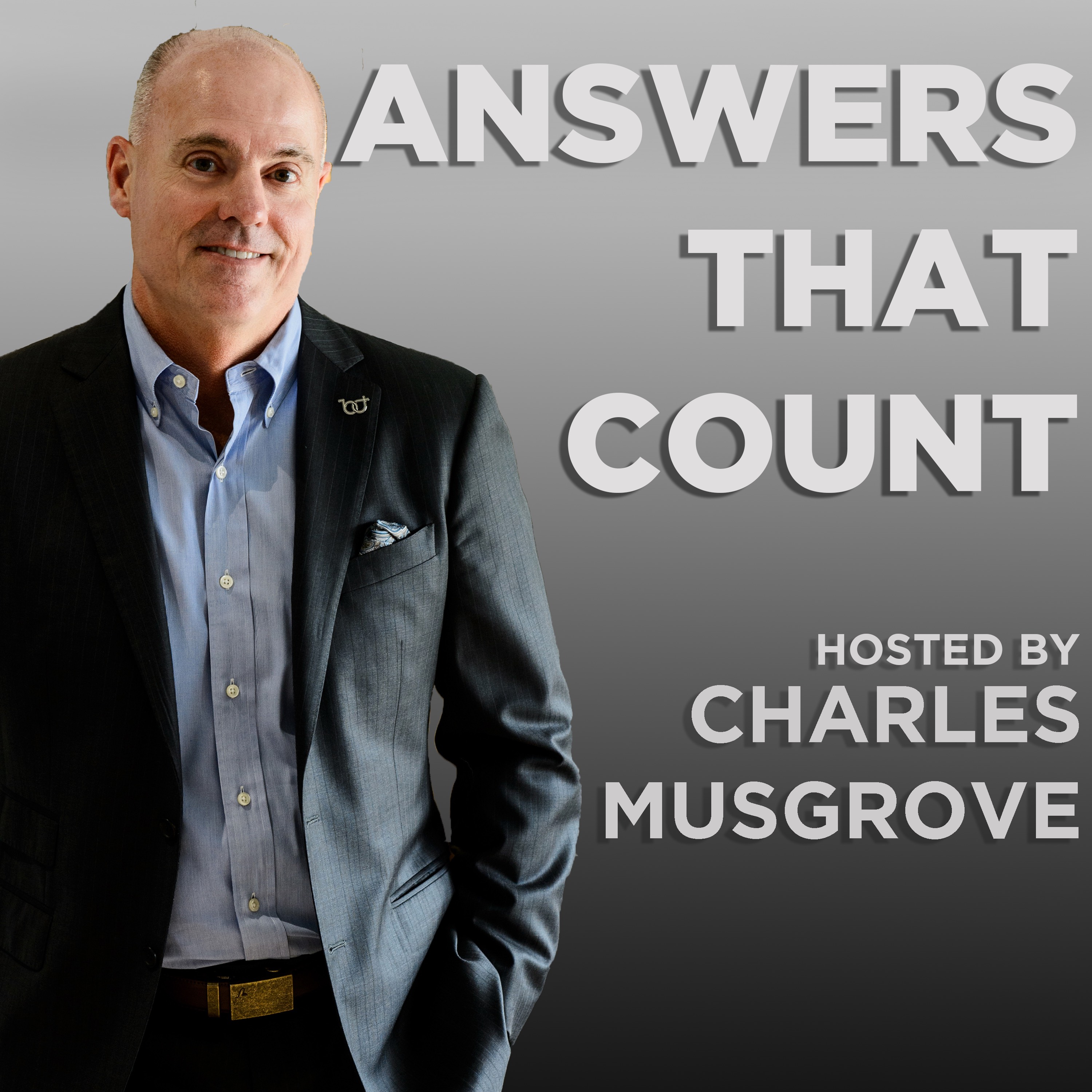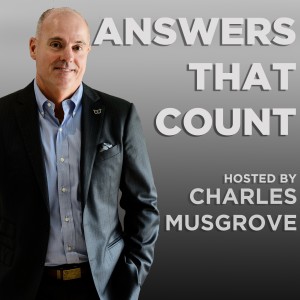
4.8K
Downloads
98
Episodes
Welcome to the gritty inside truth to running your Main Street Business! Learn what it takes to start, run, scale, protect, and yes make a profit in your business from one of the leading experts in business today. Charles Musgrove has guided countless Main Street Entrepreneurs through the pitfalls of running a profitable business. Now he shares this business insight through Answers That Count. Through his unique life experiences and entertaining interviews, you will discover the answers to the questions you have been asking!
Episodes

Sunday Apr 26, 2020
Sunday Apr 26, 2020
In this episode, we talk with FSU Economics Professor, Joe Calhoun about the impact COVID has had and will have on the economy. We discuss the Fed's tools to stimulate the economy, like creating money and dropping the interest rate and the likely impact these actions will have to inflation and recovery. Also, tools available to the legislative branch, like loan programs and the Paycheck Protection Program paired with the Fed's tools can have a significant impact on inflation, deflation, interest rates and other big picture economic measurements. Check out this episode for economics 101 mixed with COVID crisis.
Central banks have three main monetary policy tools: open market operations, the discount rate, and the reserve requirement. Most central banks also have a lot more tools at their disposal. Here are the three primary tools and how they work together to sustain healthy economic growth.1
1. Open Market Operations
Open market operations are when central banks buy or sell securities. These are bought from or sold to the country's private banks. When the central bank buys securities, it adds cash to the banks' reserves. That gives them more money to lend. When the central bank sells the securities, it places them on the banks' balance sheets and reduces its cash holdings. The bank now has less to lend. A central bank buys securities when it wants expansionary monetary policy. It sells them when it executes contractionary monetary policy.12
Quantitative easing is open market operations on steroids.3 Before the recession, the U.S. Federal Reserve maintained between $700-$800 billion of Treasury notes on its balance sheet. It added or subtracted to affect policy, but kept it within that range.4 QE almost quintupled holdings of Treasury notes and mortgage-backed securities to more than $4 trillion by 2014.56
2. Reserve Requirement
The reserve requirement refers to the money banks must keep on hand overnight. They can either keep the reserve in their vaults or at the central bank. A low reserve requirement allows banks to lend more of their deposits. It's expansionary because it creates credit.
A high reserve requirement is contractionary. It gives banks less money to lend. It's especially hard for small banks since they don't have as much to lend in the first place. That's why most central banks don't impose a reserve requirement on small banks. Central banks rarely change the reserve requirement because it's difficult for member banks to modify their procedures.7
Central banks are more likely to adjust the targeted lending rate than the reserve requirement. It achieves the same result with less disruption.
The fed funds rate is perhaps the most well-known of these tools. Here's how the fed funds rate works. If a bank can't meet the reserve requirement, it borrows from another bank that has excess cash. The interest rate it pays is the fed funds rate. The amount it borrows is called the fed funds.8 The Federal Open Market Committee sets a target for the fed funds rate at its meetings.9
Central banks have several tools to make sure the rate meets that target. The Federal Reserve, the Bank of England, and the European Central Bank pay interest on the required reserves and any excess reserves.10 Banks won't lend fed funds for less than the rate they're receiving from the Fed for these reserves.11 Central banks also use open market operations to manage the fed funds rate.12
3. Discount Rate
The discount rate is the third tool.13 It's the rate that central banks charge its members to borrow at its discount window.14 Since it's higher than the fed funds rate, banks only use this if they can't borrow funds from other banks.
Using the discount window also has a stigma attached. The financial community assumes that any bank that uses the discount window is in trouble. Only a desperate bank that's been rejected by others would use the discount window.15
How It Works
Central bank tools work by increasing or decreasing total liquidity. That’s the amount of capital available to invest or lend. It's also money and credit that consumers spend. It's technically more than the money supply, known as M1 and M2. The M1 symbol denotes currency and check deposits. M2 is money market funds, CDs, and savings accounts. Therefore, when people say that central bank tools affect the money supply, they are understating the impact.16
Many More Tools
The Federal Reserve created many new and innovative tools to combat the 2008 financial crisis. Now that the crisis is over, it's discontinued most of them. They are ready for the Fed the next time a crisis looms.17
The Bottom Line
Central banks often hold three major monetary tools for managing money supply. These are:
- Open market operations
- Reserve requirement
- Discount rate
These tools can either help expand or contract economic growth.
Monetary policies are aimed to control:
- Inflation
- Consumption
- Liquidity
- Growth
Aside from the three traditional monetary tools, the Federal Reserve possesses new, innovative ones, most of which were contrived to cope with the 2008 recession.

No comments yet. Be the first to say something!